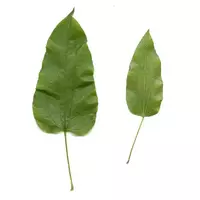Smilax (sassaparil)

Smilax (sassaparil) is a climbing plant that belongs to the Smilax family and has over 200 species. Smilax or Smilax L. is a shrub that grows mainly in Asia and the Americas, as well as on islands located in the Pacific Ocean. Several species of the plant smilax (sassaparil) grow in the European part of the globe. It is noteworthy that the indigenous people of Asia and America have known about the unique beneficial properties of the smilax (sassaparil) plant since ancient times.
The first written mention of smilax (sassaparil) was found in historical documents dating from 155
3. In a book called the Chronicles of Peru, which was written by a Spanish priest, and part-time soldier, historian, geographer and famous humanist Pedro Ciez de Leon, the plant sarsaparil or smilax (sassaparil), unusual for a European person, is mentioned, which is native to Peru and has miraculous healing properties.
Around the same period, the Smilax root (sassaparil) was introduced by the Spanish conquistadors into medieval Europe. where local medicines immediately adopted the distinctive unique properties of the plant. It is worth noting that initially smilax (sassaparil) was used exclusively for medical purposes. With the help of infusions and extracts of smilax root (sassaparil), syphilis was cured, as well as severe forms of rheumatism and other diseases that were common during the Middle Ages in Europe.
Nowadays, the smilax root (sassaparil) has not lost its relevance. The plant is considered an effective means of folk, and besides, officially medicine. He believes that the root of the Gondur root is better suited for the production of medicines. In cooking, young shoots and smilax leaves (sassaparil) are usually used. The plant grows in the Caucasus, namely on the Black Sea coast in the vicinity of Sochi, as well as in Abkhazia.
Locals have long collected young smilax shoots (sassaparil) and preserved them. Canned smilax leaves (sassaparil) in the Caucasus are consumed as an independent dish or snack, and in addition they are served as a side dish for a variety of meat dishes. In Georgia, brewed smilax leaves (sassaparil) have long been used to prepare the national dish phali. Freshly cut smilax (sassaparil) leaves can be eaten raw.
The leaves taste sour with a hill. The plant is added to vegetable salads and used as a spice when preparing the first and main courses. Smilax is not only used for medicinal and culinary purposes. The extract obtained from smilax root has unique cosmetic properties that help in the treatment of some diseases that affect the human skin.
smilaxa (sassaparil) 0.1 kCal
Energy value of smilax (sassaparil) (Ratio of proteins, fats, carbohydrates - ju):
Proteins: 0 g (~ 0 kCal)
Fats: 0 g (~ 0 kCal)
Carbohydrates: 0 g (~ 0 kCal)
Energy ratio (b | y): 0% | 0% | 0%
 Español
Español Français
Français Português
Português Русский
Русский 简体中文
简体中文 繁體中文
繁體中文 日本語
日本語 한국어
한국어 العربية
العربية Türkçe
Türkçe Қазақ
Қазақ Deutsch
Deutsch Italiano
Italiano Українська
Українська
